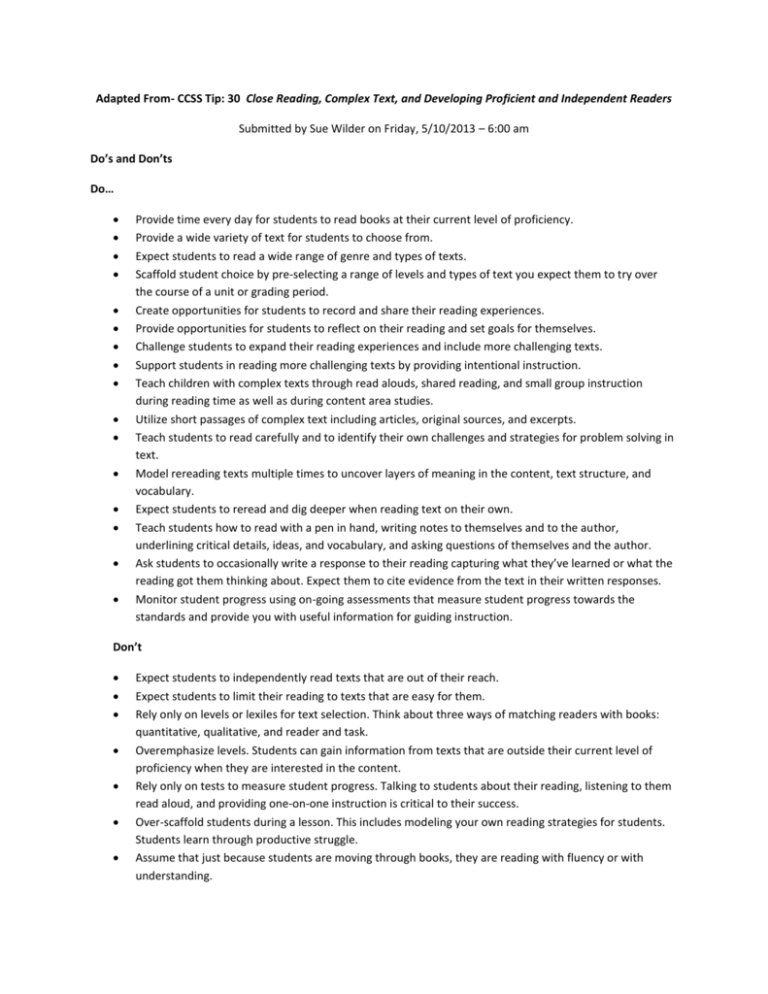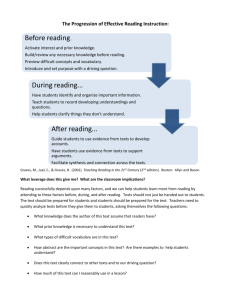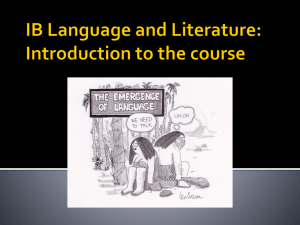Close Reading of Complex Texts Tips
advertisement

Adapted From- CCSS Tip: 30 Close Reading, Complex Text, and Developing Proficient and Independent Readers Submitted by Sue Wilder on Friday, 5/10/2013 – 6:00 am Do’s and Don’ts Do… Provide time every day for students to read books at their current level of proficiency. Provide a wide variety of text for students to choose from. Expect students to read a wide range of genre and types of texts. Scaffold student choice by pre-selecting a range of levels and types of text you expect them to try over the course of a unit or grading period. Create opportunities for students to record and share their reading experiences. Provide opportunities for students to reflect on their reading and set goals for themselves. Challenge students to expand their reading experiences and include more challenging texts. Support students in reading more challenging texts by providing intentional instruction. Teach children with complex texts through read alouds, shared reading, and small group instruction during reading time as well as during content area studies. Utilize short passages of complex text including articles, original sources, and excerpts. Teach students to read carefully and to identify their own challenges and strategies for problem solving in text. Model rereading texts multiple times to uncover layers of meaning in the content, text structure, and vocabulary. Expect students to reread and dig deeper when reading text on their own. Teach students how to read with a pen in hand, writing notes to themselves and to the author, underlining critical details, ideas, and vocabulary, and asking questions of themselves and the author. Ask students to occasionally write a response to their reading capturing what they’ve learned or what the reading got them thinking about. Expect them to cite evidence from the text in their written responses. Monitor student progress using on-going assessments that measure student progress towards the standards and provide you with useful information for guiding instruction. Don’t Expect students to independently read texts that are out of their reach. Expect students to limit their reading to texts that are easy for them. Rely only on levels or lexiles for text selection. Think about three ways of matching readers with books: quantitative, qualitative, and reader and task. Overemphasize levels. Students can gain information from texts that are outside their current level of proficiency when they are interested in the content. Rely only on tests to measure student progress. Talking to students about their reading, listening to them read aloud, and providing one-on-one instruction is critical to their success. Over-scaffold students during a lesson. This includes modeling your own reading strategies for students. Students learn through productive struggle. Assume that just because students are moving through books, they are reading with fluency or with understanding.











